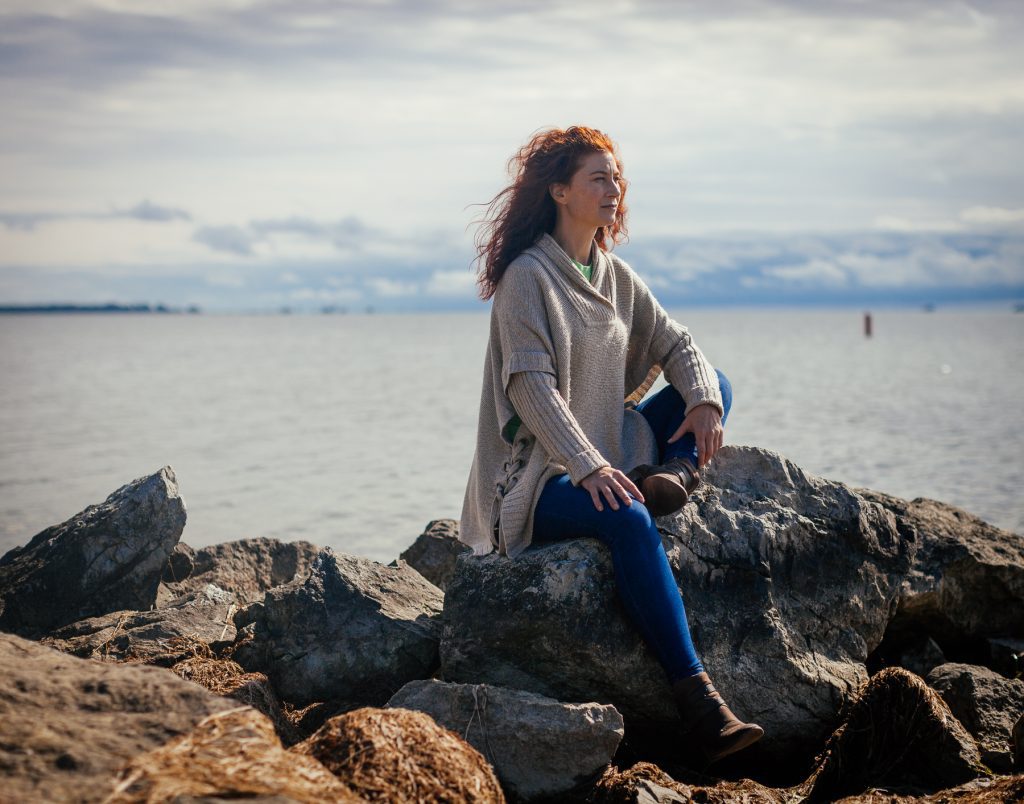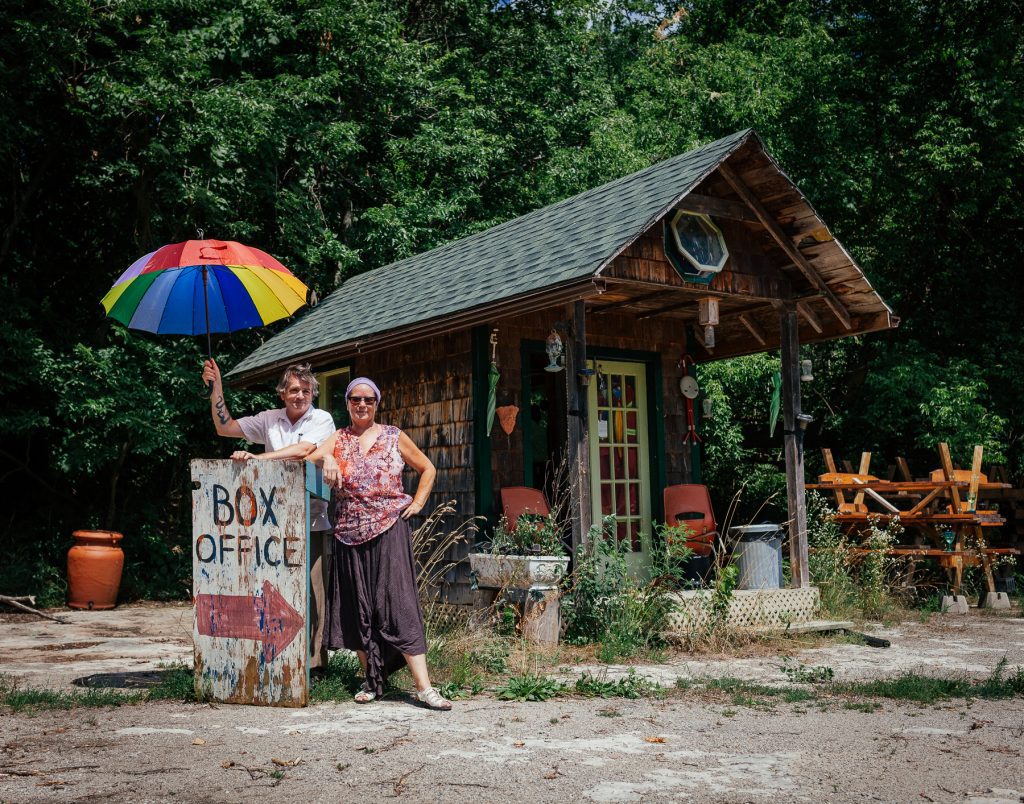In 2016, after Heidi’s divorce, she found herself at a fork in the road. Heidi decided to leave Guelph and her office job, and head for the unknown in Essex County. Kelly, her friend, was in a similar situation and also up for a significant life change. Together, they decided to open a Bed and Breakfast and called it “Tern In,” named after the bird (three types of terns visit their backyard regularly).
MEET THE PEOPLE
- Patricia – Pelee Island
- Heidi – Pigeon Bay
- Carrie Ann and Janne – Leamington
- Lisa – Leamington
- Mohamad – Leamington
- Sandra – Leamington
- Anthony – Kingsville
- Todd – Wheatley
- Ken – Shrewsbury
- Michelle – North Buxton
- Todd – Port Stanley
- Julia – Stratford
- Nandita – Waterloo
- Charlie – Guelph
- Mat & Melissa – Norfolk County
- John & Jan – Long Point
- Holly – St. Williams
- Gregary – Niagara
- Fred – Port Colborne
- Robin – Oshawa
Heidi – Pigeon Bay
Story and images by Colin Boyd Shafer
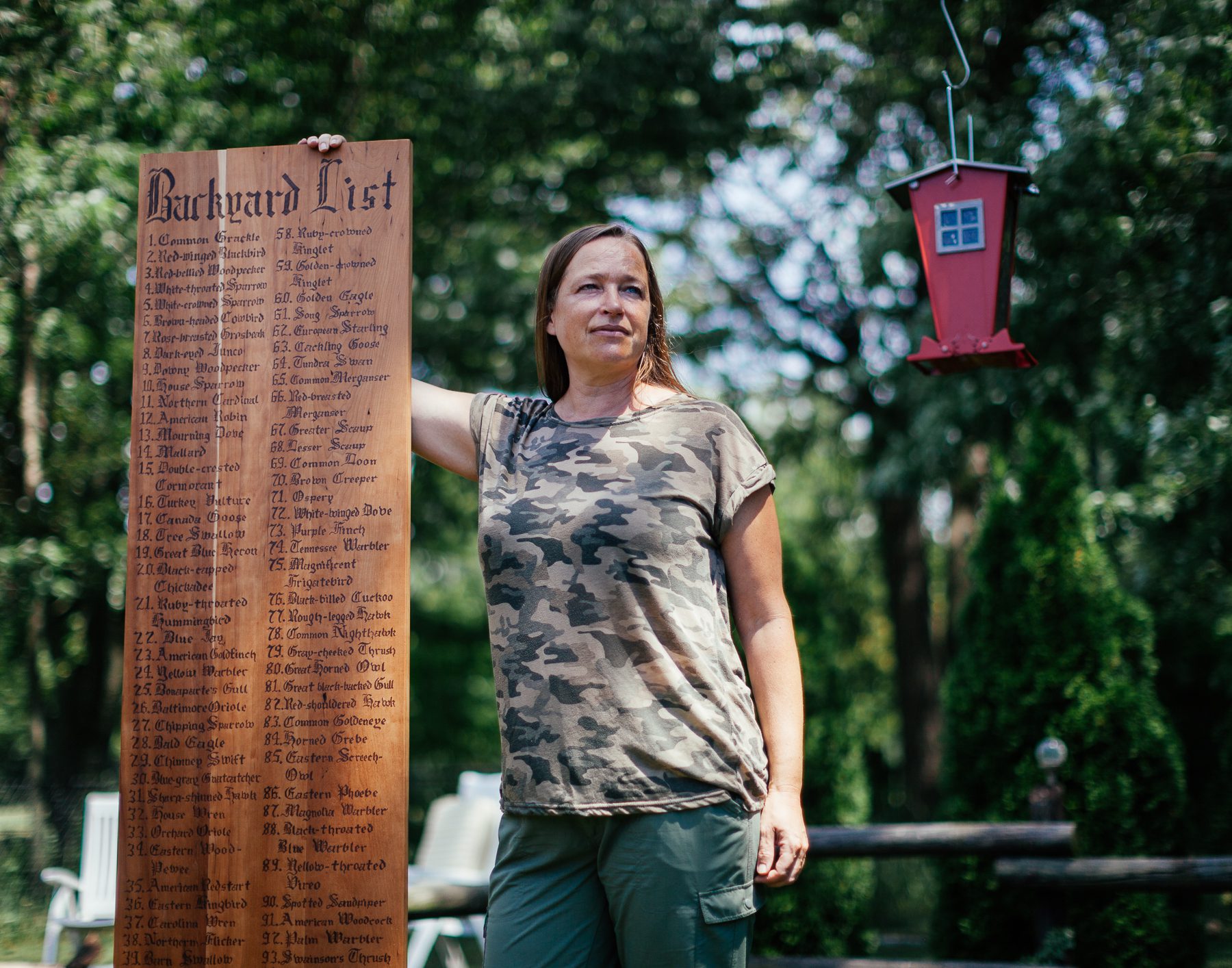
Heidi’s first trips to Point Pelee National Park, a world-renowned bird-watching spot, were with her father Larry, an avid birder in his retirement. Like the 350,000 other visitors, they came with binoculars in hand to observe a spectacular annual migration.
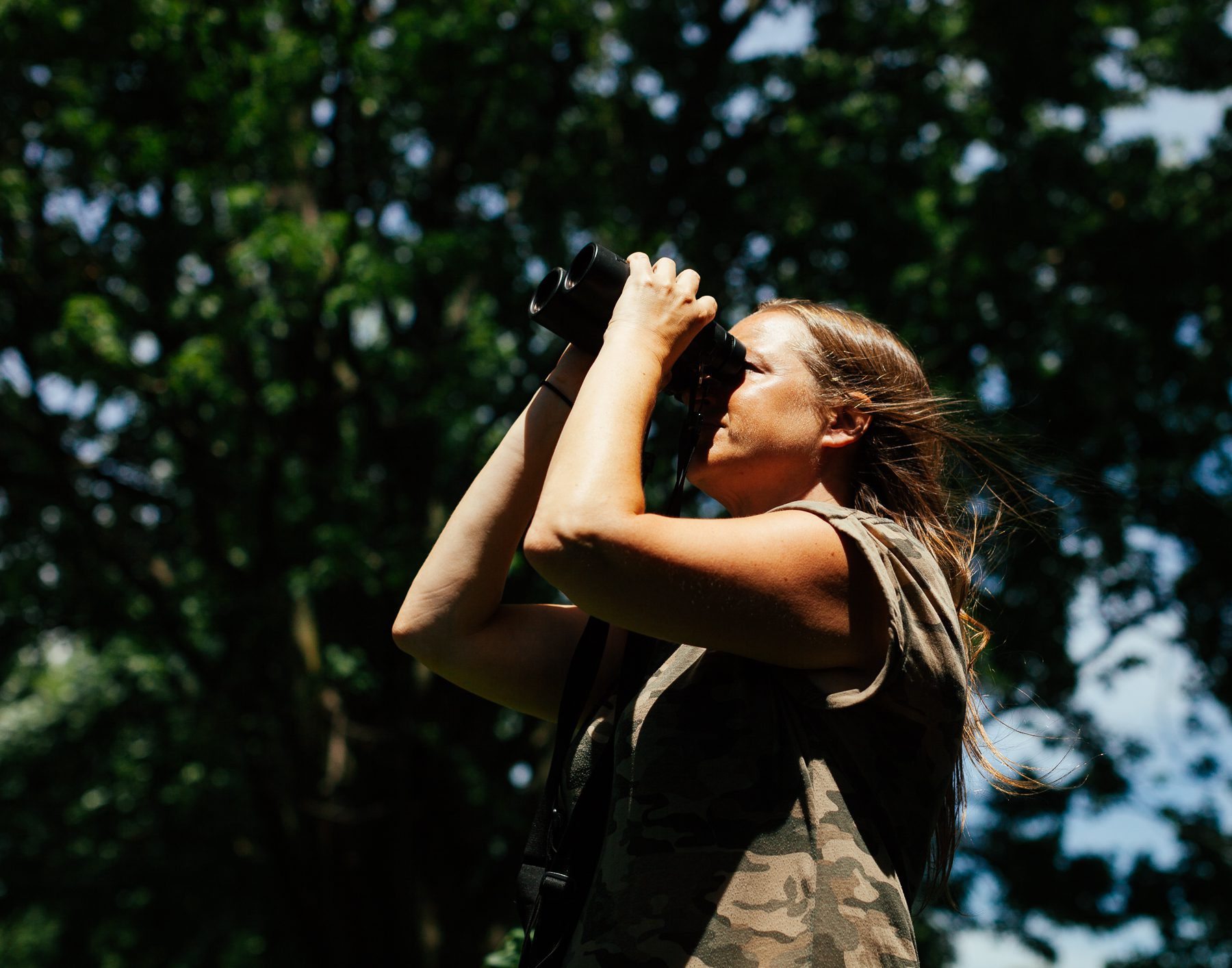
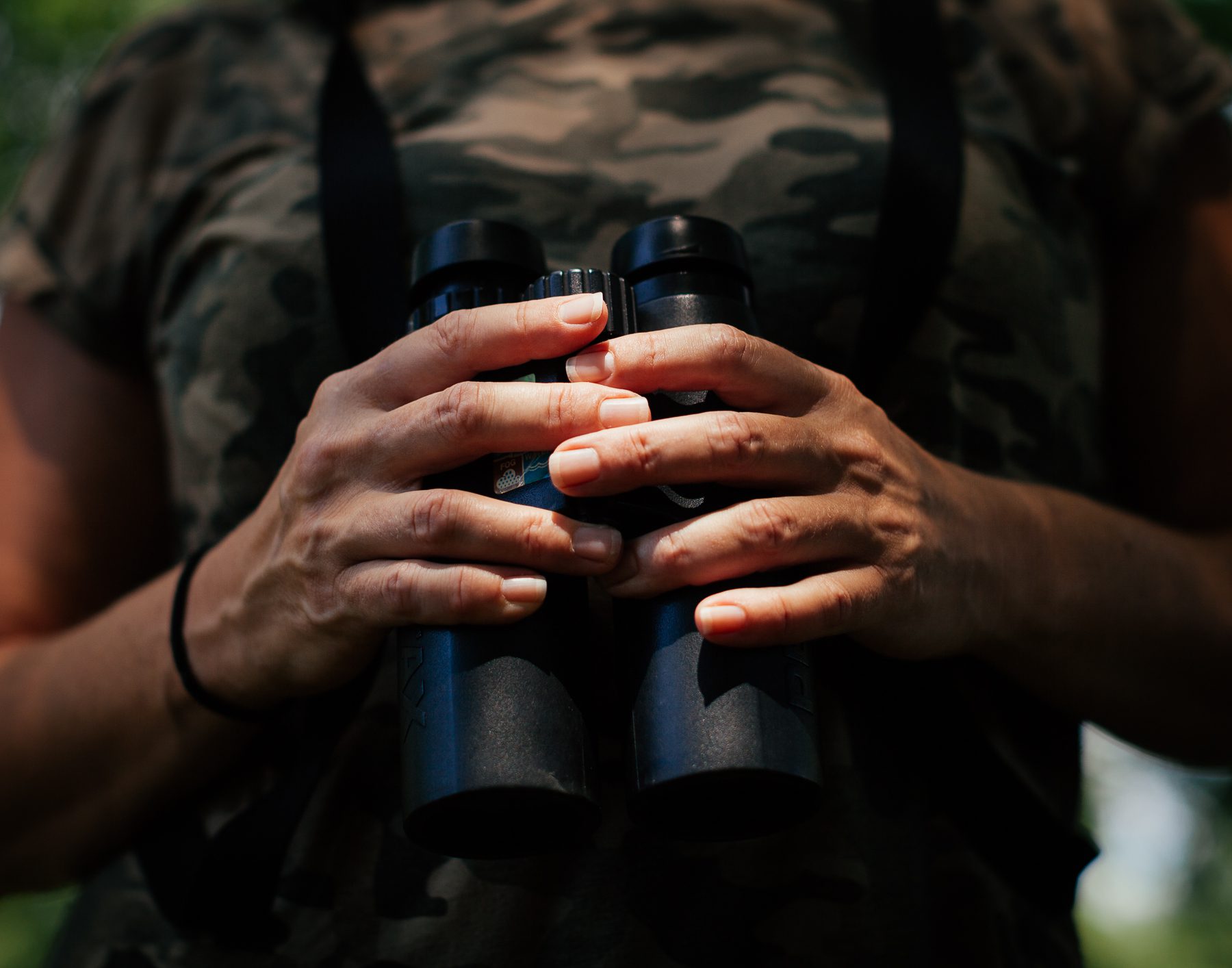
Each time Larry upgrades his binoculars, he hands down his old pair to his daughter, Heidi. She appreciates how the hand-me-downs keep getting better and better!
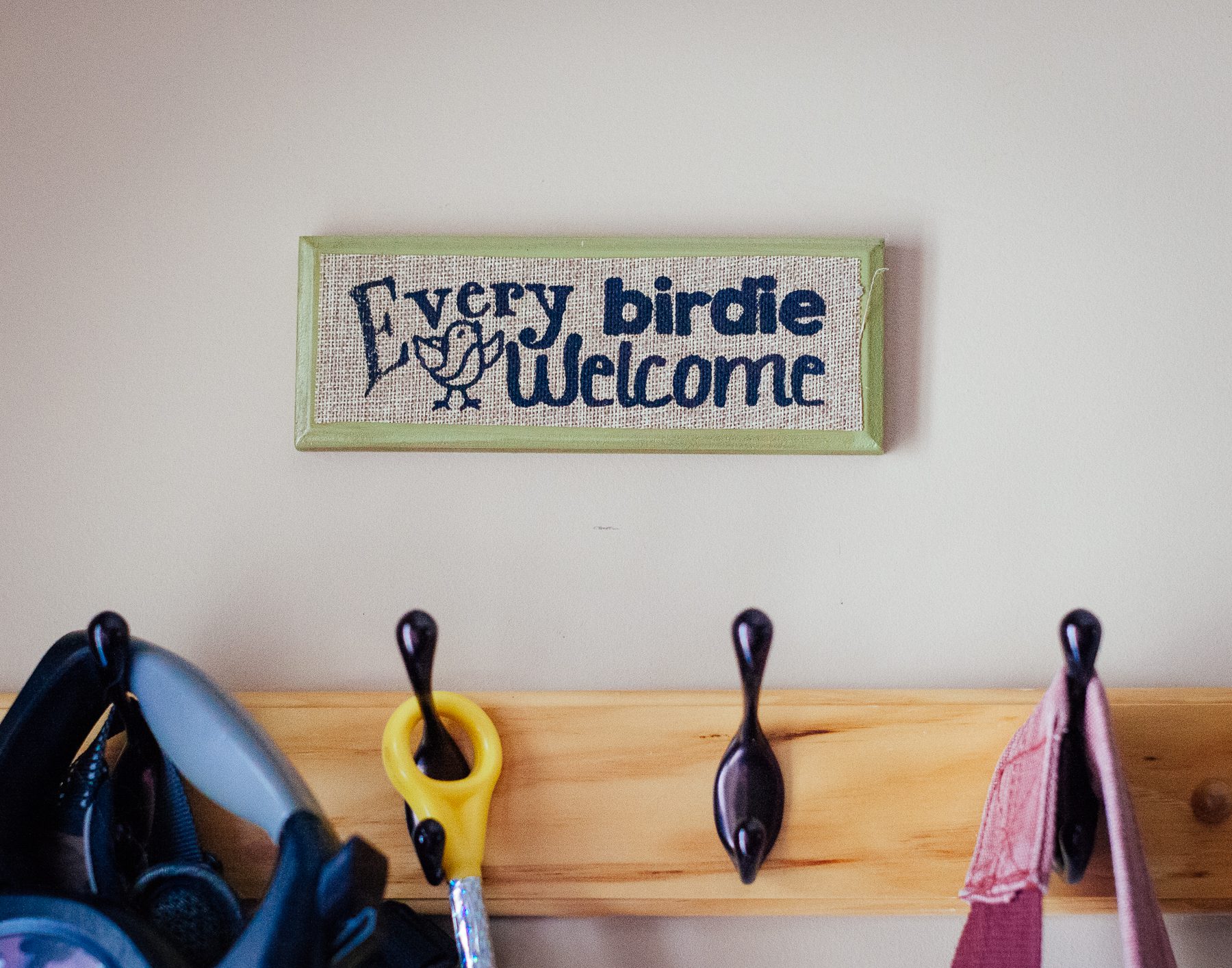
The sign at the front entrance to Tern In Bed & Breakfast.
They found a place in Pigeon Bay, only seven kilometres from Point Pelee National Park. Pigeon Bay received its name at a time when the now-extinct passenger pigeons were so numerous that their flock would blacken out the sun over the bay.
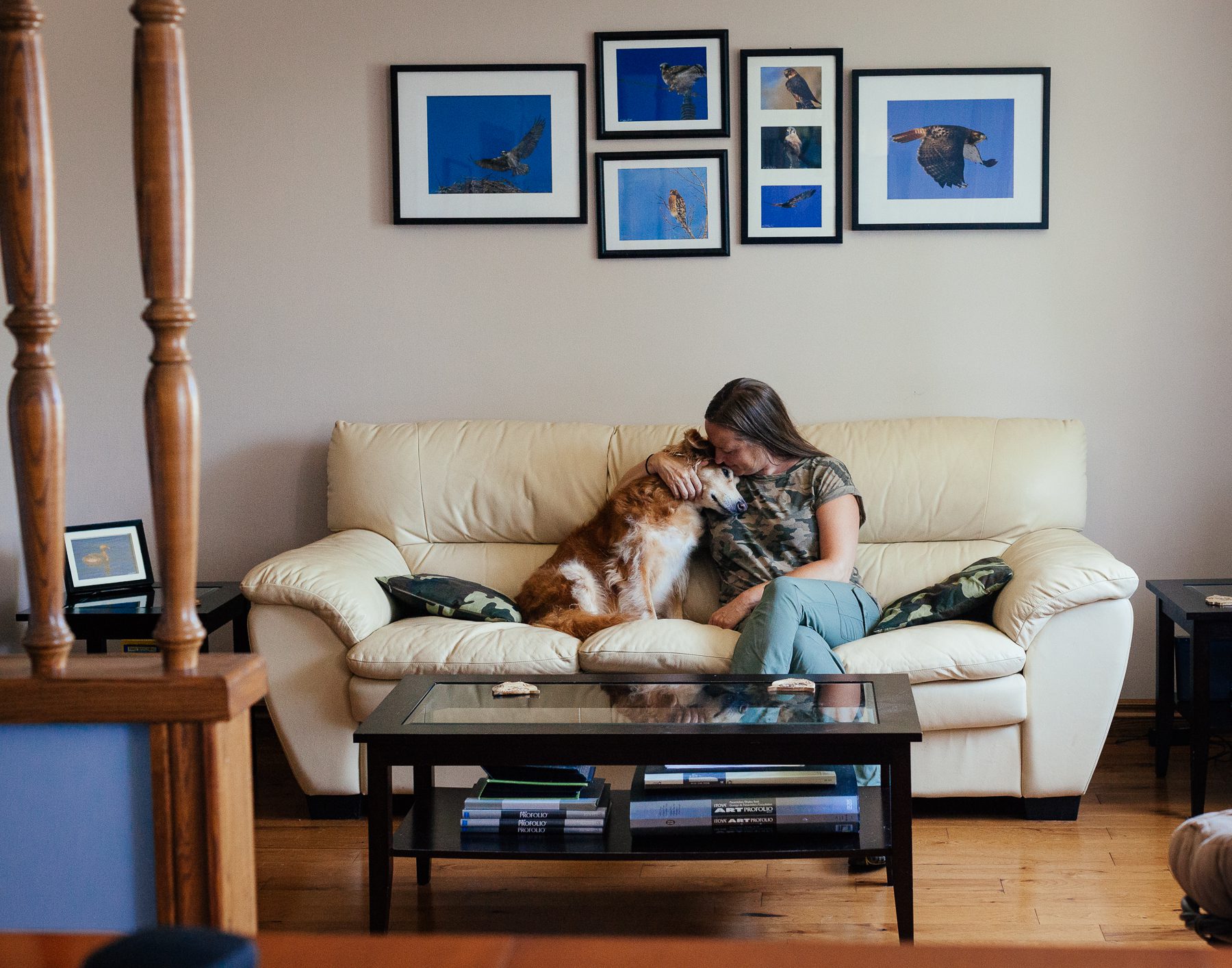
Heidi and her dog, Molly sit under a collection of photographs Heidi and Kelly have taken of different local birds of prey. They've lined the walls in their B&B with photos of all sorts of birds.
Heidi describes living by the lake as an intense experience — the storms, the water currents, and the insects. Now, Lake Erie is what she wakes up to every morning and looks at before going to bed every night — she calls it her lifeblood.
"Lake Erie is something I gaze upon daily, so it is incredibly valuable to me."
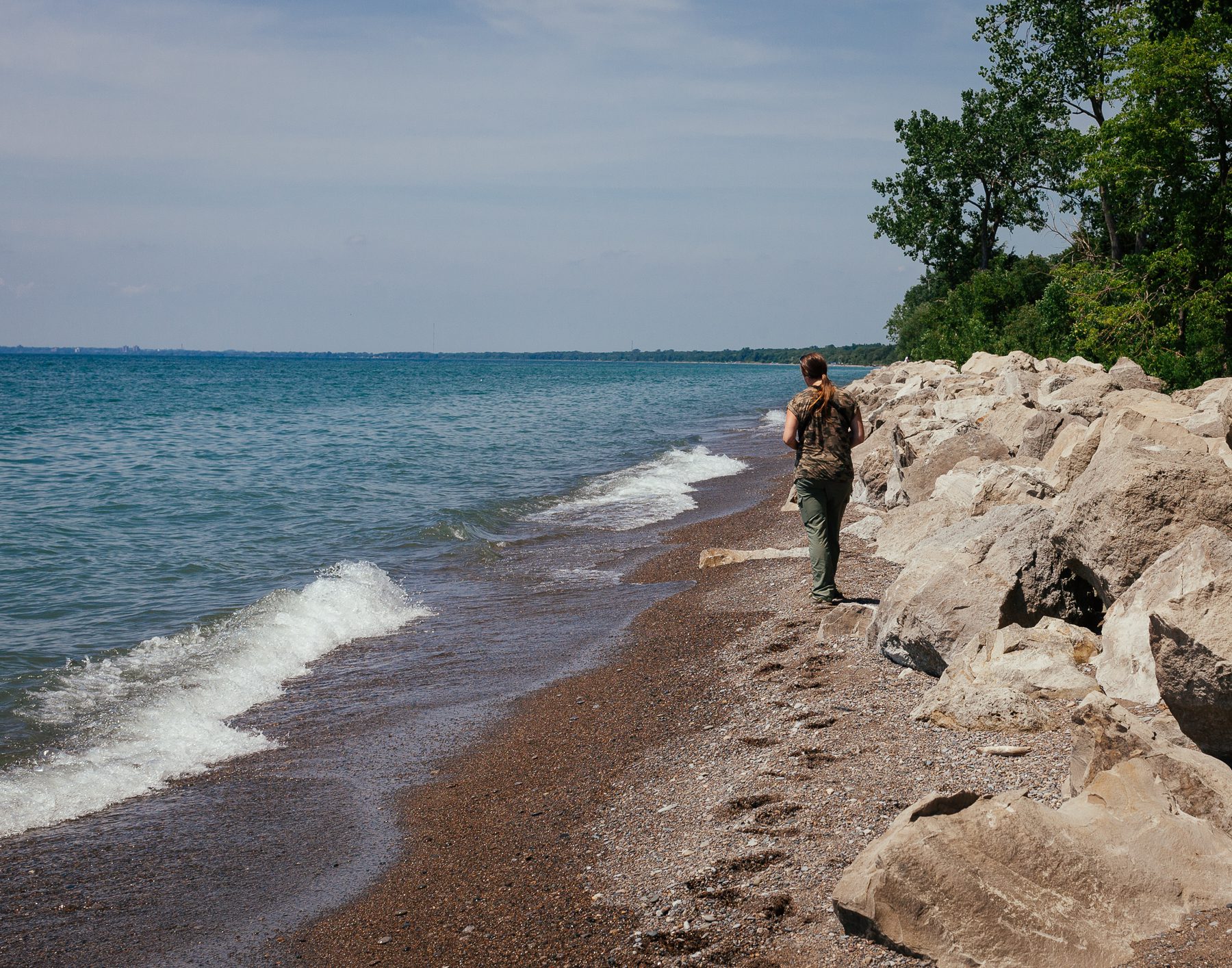
Heidi and Kelly have both gotten into kayaking since moving to Pigeon Bay. In the summer of 2018, Heidi went out for a regular Friday evening kayak to watch the sunset with her work friends. That particular day the waves were more prominent than usual — six feet high. Instead of turning back, Heidi decided to try surfing them with her kayak. The force flipped her boat leaving Heidi concussed and 50 feet out from shore. As the waves kept hitting her, a friend swam out to get her. This traumatic event demonstrated to Heidi the lake's incredible power and how it deserves her respect.
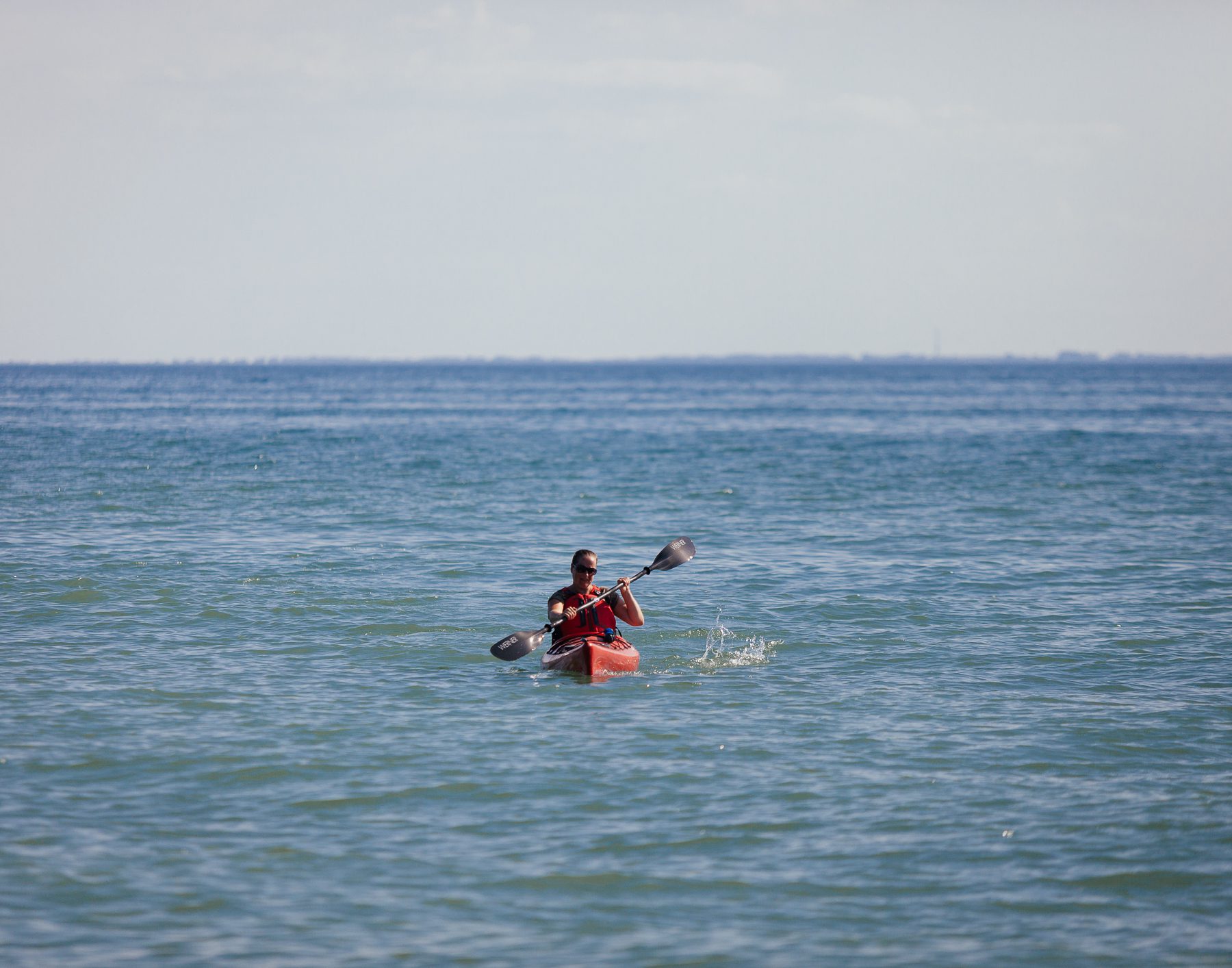
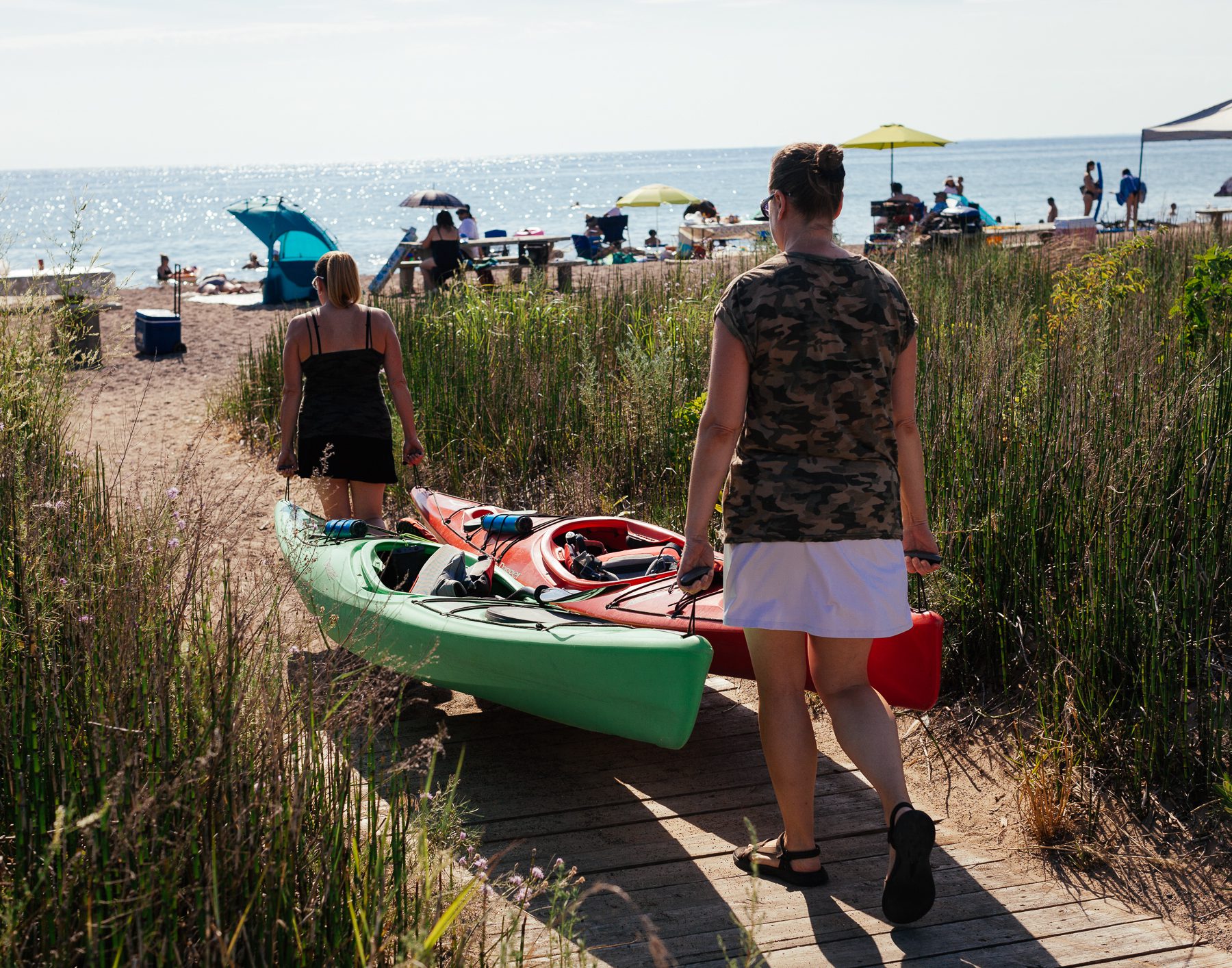
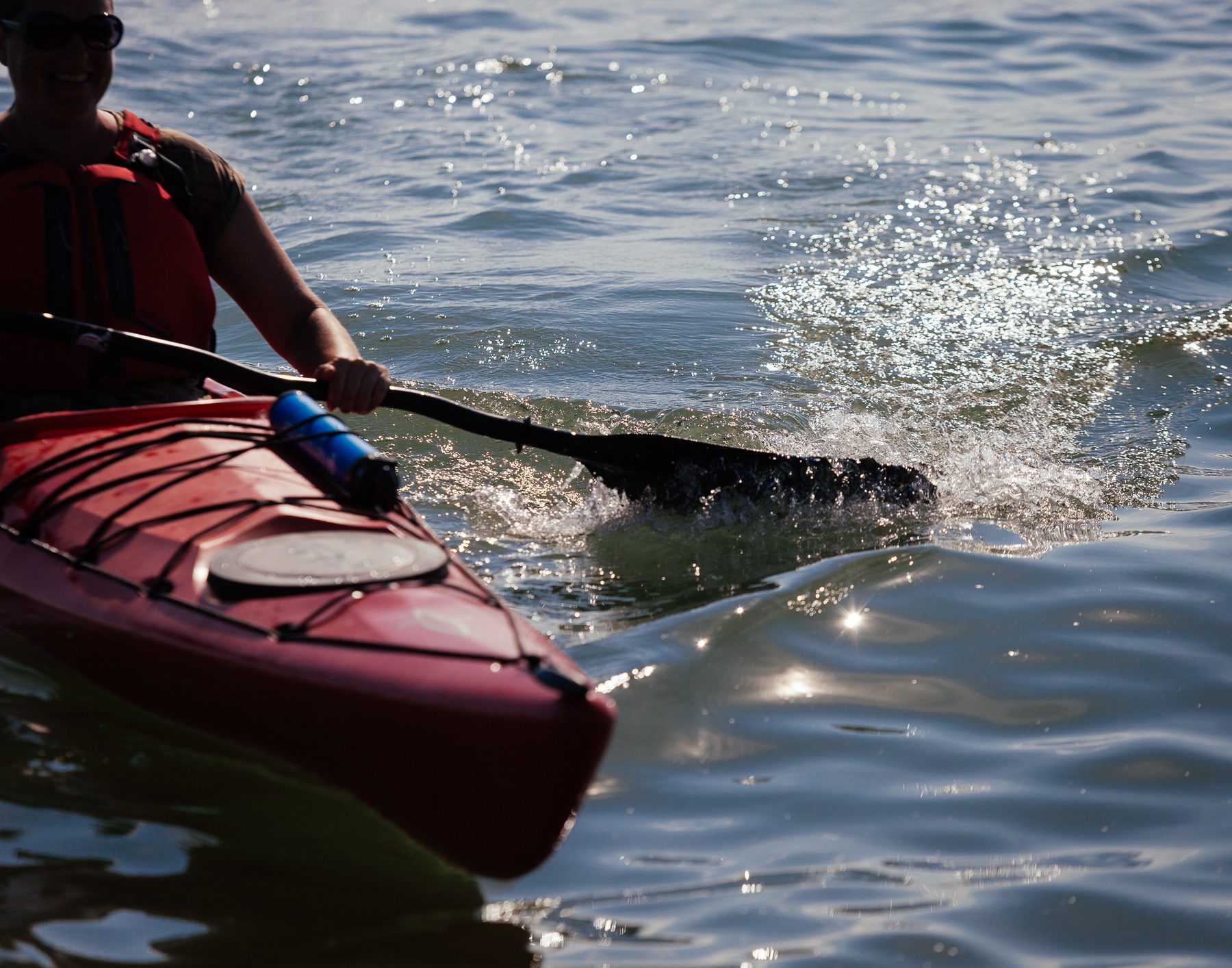
Beauty is something Heidi seems to find all around herself in Pigeon Bay and Point Pelee National Park. For example, in September 2018, they had 700 monarch butterflies in their backyard over four days.
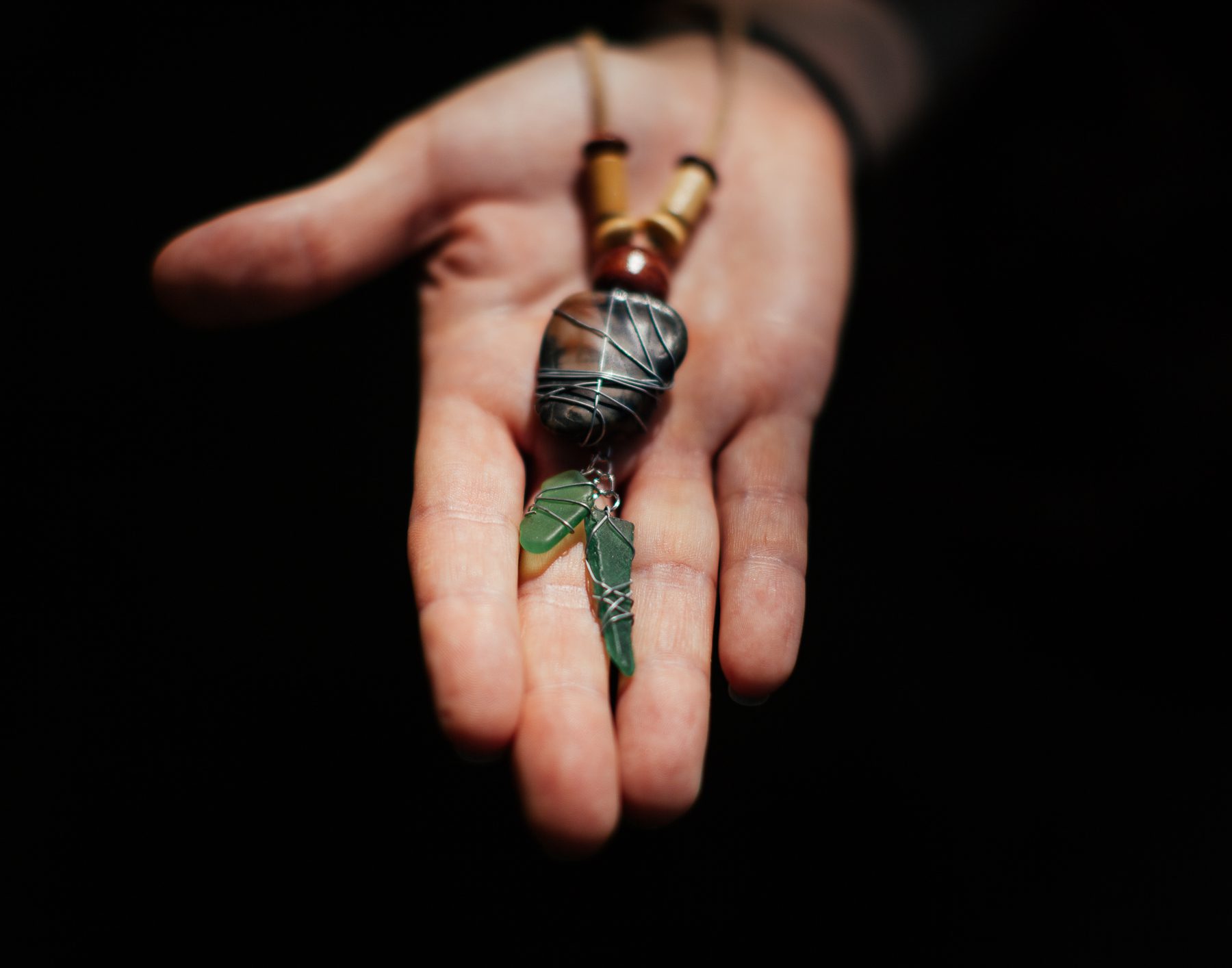
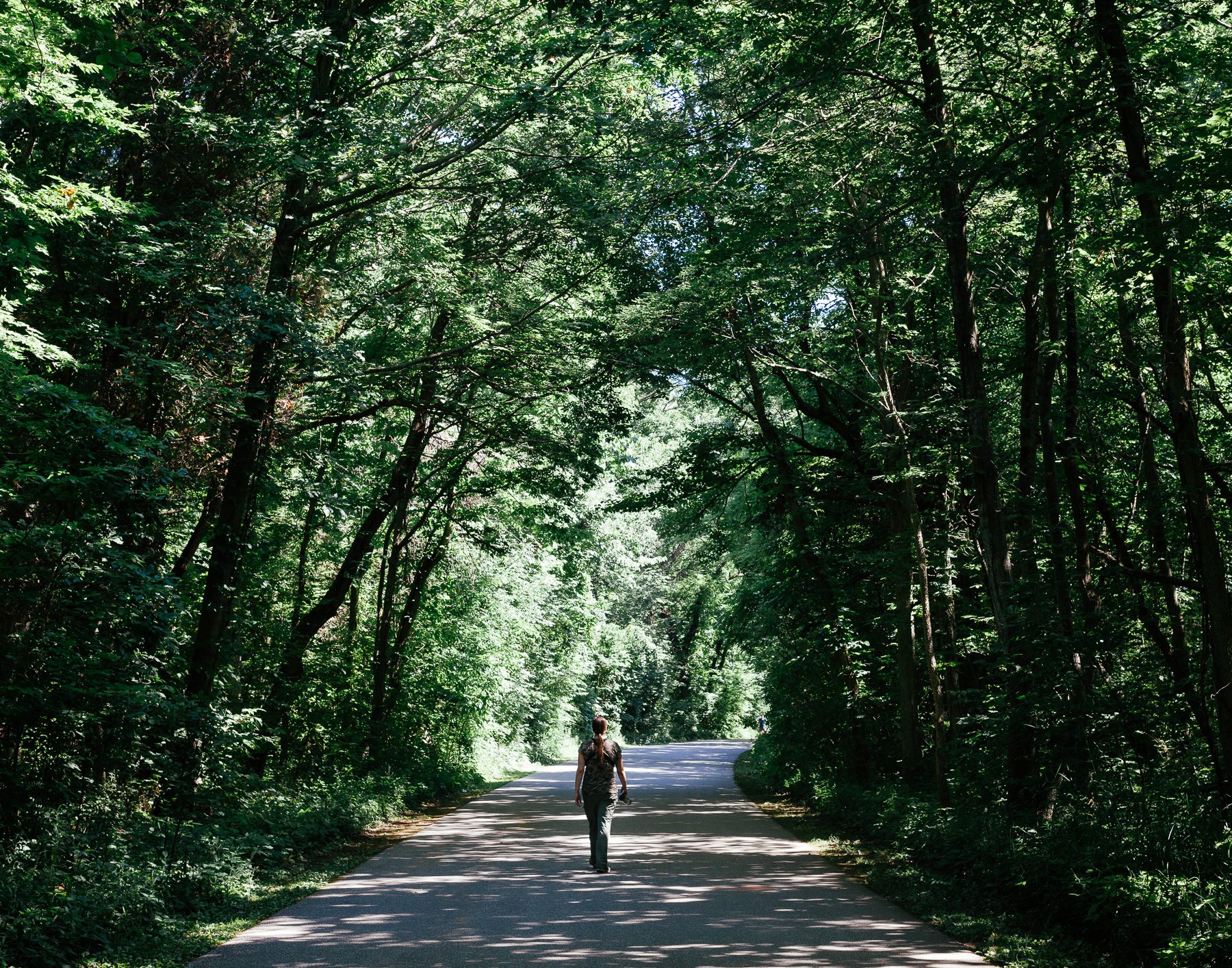
(left) Heidi has spent a lot of time walking up and down the beach collecting beach glass. Some of it she has turned into jewelry, like this piece. (right) Heidi walks through Point Pelee National Park.
The tourism season around Point Pelee starts earlier than anywhere else on the lake because of the spring migration. It is on a flyway, so around 380 “vagrants” (rare birds to the region) migrate through the area. In May, tens of thousands of birders arrive in Point Pelee.
A lot of migrating birds make a stop at the Tern In backyard. Heidi and Kelly keep an engraved “backyard list” on cherry wood, documenting all the different species spotted in the yard. So far, they have 120 birds on the list. One rarest on this list is the magnificent frigatebird — a large black bird with a long forked tail.

In 2017, a rare white-winged dove visited their yard for three days. It became a full-blown event with wine, as many other birders came over to try and get a glimpse of the bird [see the below photo]. Heidi and Kelly even received a plaque from the OFO (Ontario Field Ornithologists) for hosting.
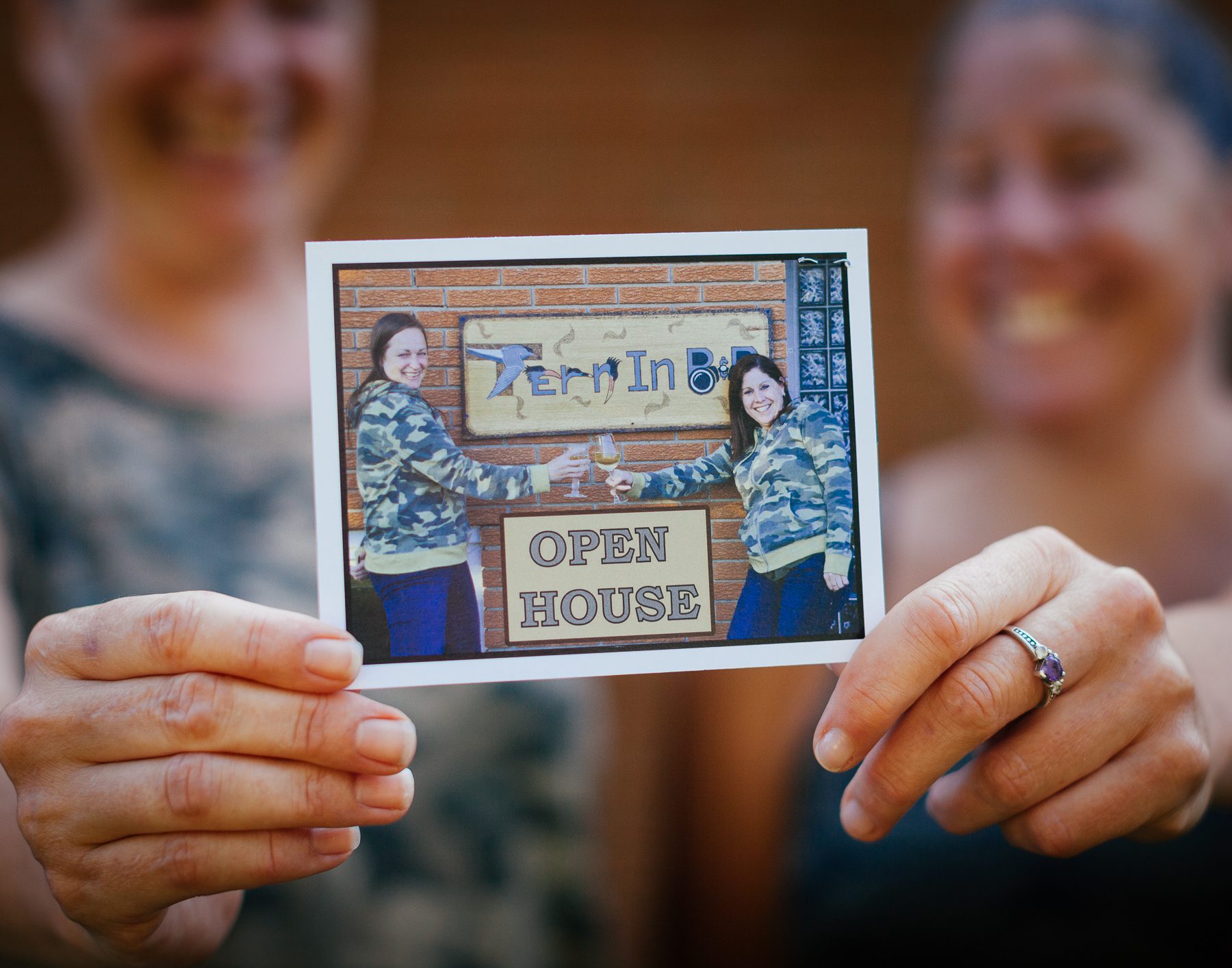
“Everything that lives here is because of the lake. If you destroy the lake, you are destroying everything I love about this place.”
One bird of particular intrigue is the prothonotary warbler, a small yellow bird full of personality (they love looking at their reflection in the water). Point Pelee is this bird’s most northern breeding range. Sightings were rare in the past, but have been increasing in recent years (which Heidi thinks may be attributable to the destruction of their more southern breeding grounds).

Besides watching the prothonotary warbler, Heidi loves photographing them. She turned this particular photograph into a coaster.

The marsh in Point Pelee is a place Heidi loves to bird. “It’s a perfect spot to watch shorebirds.”
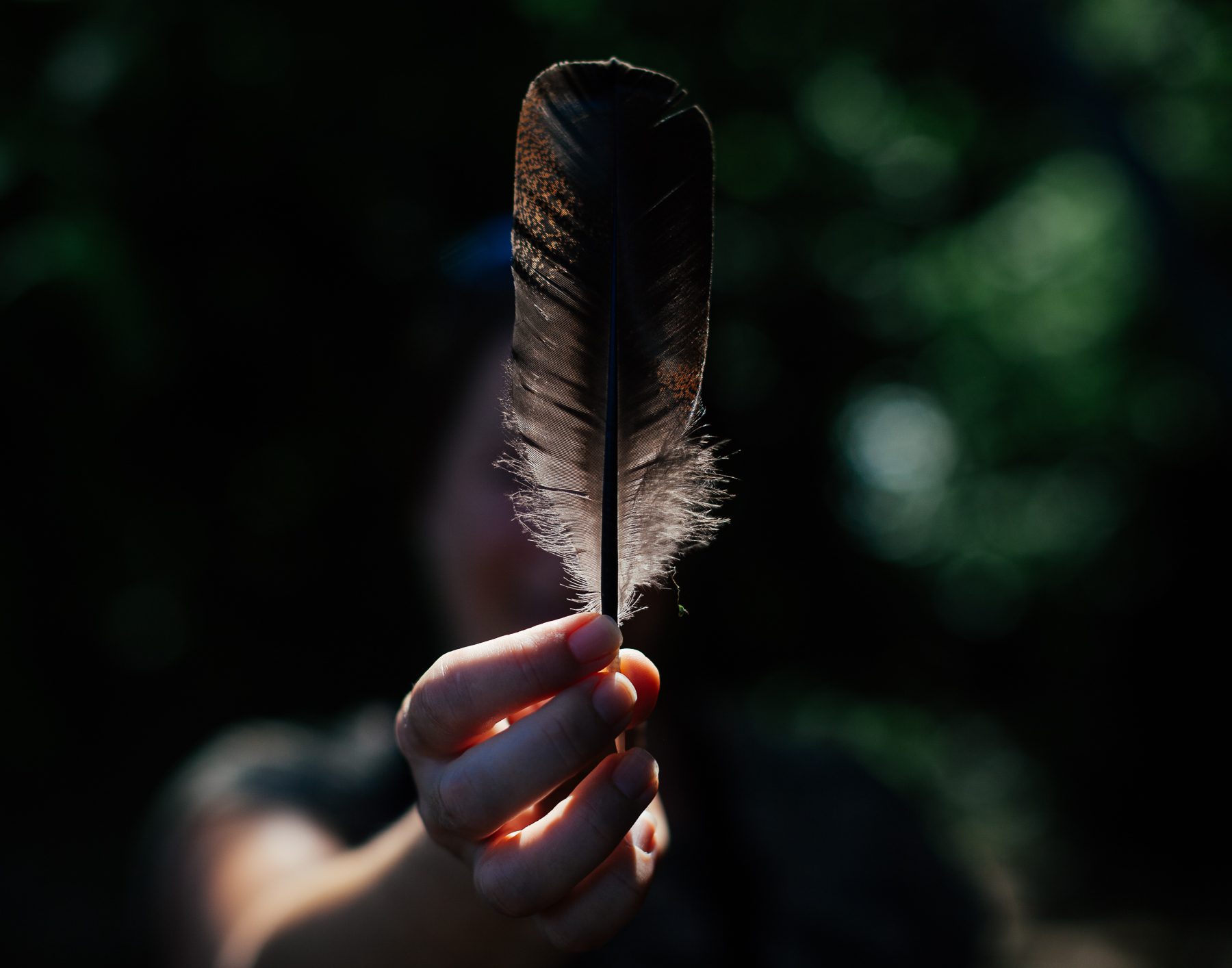
Heidi holds up a feather she found while hiking in Point Pelee National Park — one of approximately 6,000 feathers found on the average wild turkey. Wild turkeys were extirpated (locally extinct) from Ontario as a result of habitat loss and overhunting. Reintroduction efforts began in the 80s, and the species is now common in southern Ontario.
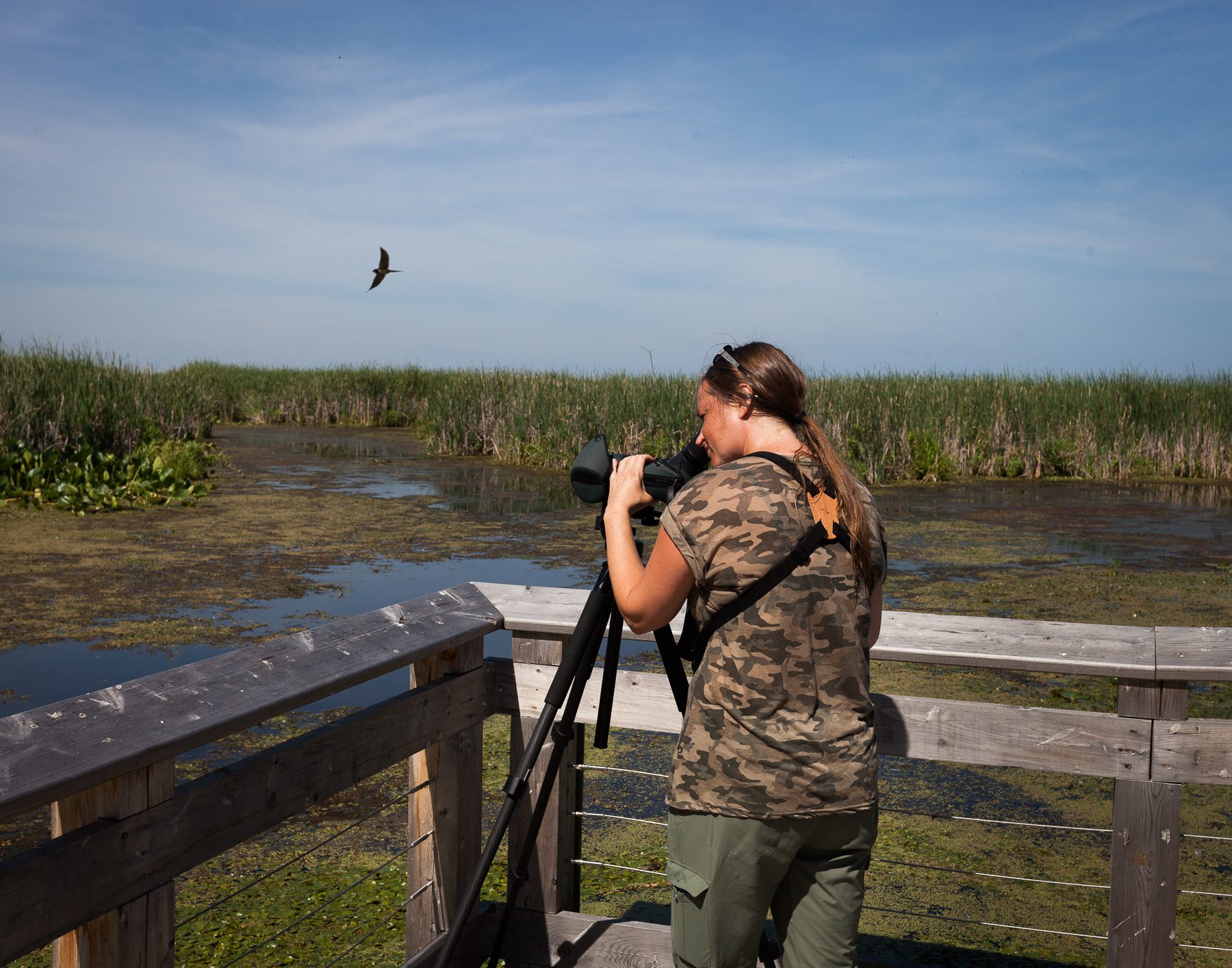
As Heidi and Kelly became more involved in birding, they started wearing more camouflage — in an attempt to blend in more and disturb the birds less. One day, a fellow birder called them “the Camo Girls.” Since then, Heidi and Kelly have embraced the name, and if they see something that has a camouflage pattern, they are likely to buy it, and when friends give them gifts, camo is often involved.
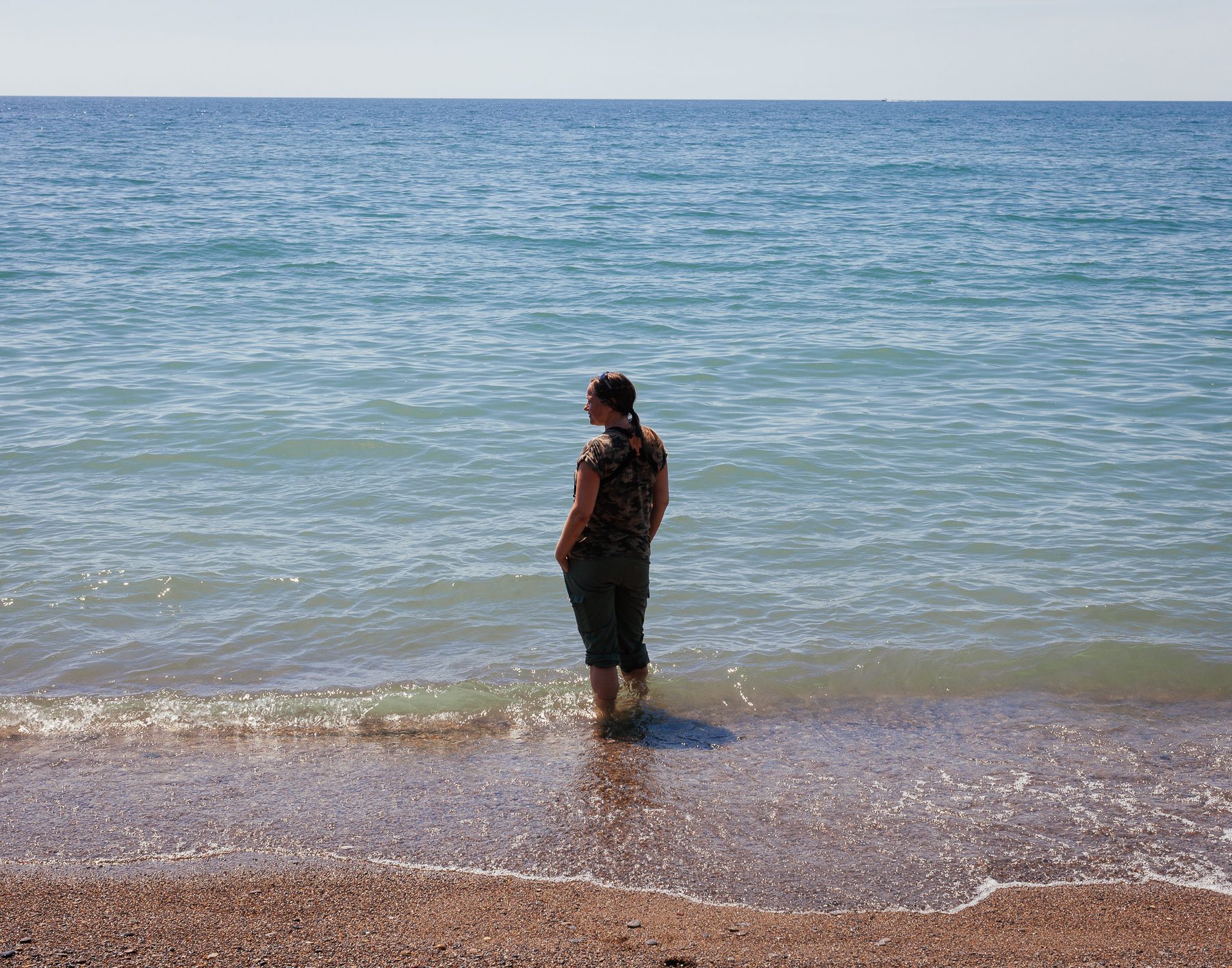
After the first week of August, Heidi usually stops swimming in the lake because of the intense amount of algae in the late summer. Heidi appreciates seeing how researchers have placed buoys in the water near her house to record data on the algae. She hopes more people will care about this issue.
“The continued disregard for this lake is disgusting. Something needs to be done to help these waters, or we will no longer get any enjoyment out of it. This beautiful, majestic, and versatile lake needs our help.”
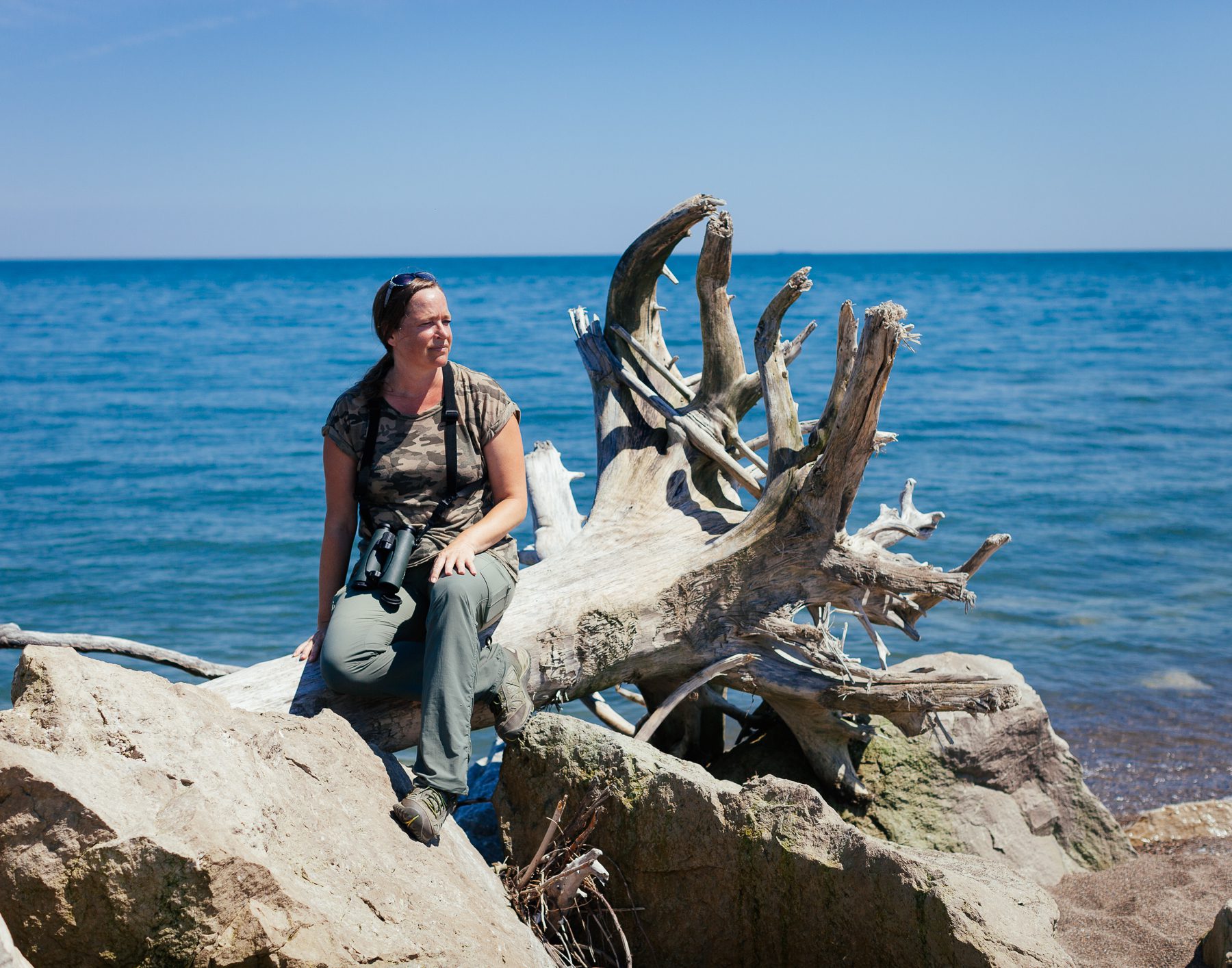
Heidi sits at the point of Point Pelee — the southernmost mainland tip of Canada.
Heidi has no plans of ever leaving Pigeon Bay.
“This is home now. I have such a connection to the water. I want to make that clear. I don’t consider myself a religious person, but I guess it is a spiritual connection that I have with the water. It becomes a part of you.”
Read More
STORIES FROM THE LAKE
Patricia – Pelee Island
Take Action
Lake Erie and the millions of people who rely on it for their drinking water, local jobs, and so much more need your help.
The health of Lake Erie continues to decline. Action is needed more than ever to restore its health for current and future generations.
You can make a difference. Here’s how you can help protect the lake and support the people who are closely connected to it.
EXHIBITION BY: documentary photographer COLIN BOYD SHAFER in collaboration with ENVIRONMENTAL DEFENCE



